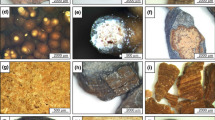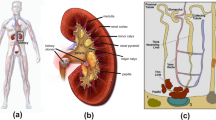Abstract
In the course of a disinterment of an ancient Avar burial place at Székkutas-Kápolna near Hódmezővásárhely, Hungary, the archaeologist conducting the excavations, Miss Katalin B. Nagy, noticed a lithoid body of oval shape in the pelvis of a skeleton. The find was identified on morphological and chemo-analytical grounds as a bladder stone. In view of its rarity and its palaeopathological interest, it is described in detail. It is also expected to draw the attention of archaeologists to the possibility of similar findings. A brief review of the pertinent literature is given.
Similar content being viewed by others
References
Beck, S. W., W. P. Mulvaney: Apatitic urinary calculi from early American Indians.JAMA, 195, 1044 (1966).
Berényi, M.: Urolithiasis (in Hungarian). Medicina, Budapest 1981.
Boross, M. M., Nemeskéri, J.: Ein bronzezeitlicher Nierenstein aus Ungarn.Homo, 14, 149 (1963).
Cockburn, A., Cockburn, E.: Mummies, Disease and Ancient Cultures. Cambridge University Press 1983.
Gersten, E., Allison, M. J., Fouant, M. M.: Renal diseases in South American mummies.Lab. Invest., 48, 294 (1983).
Harsányi, L., Nemeskéri, J.: Über Geschlechtsdiagnose an Skelettfunden.Acta Med. Leg. Soc., 17, 51 (1964).
Houghton, P.: A renal calculus from Proto-Historic New Zealand.Ossa, 2, 11 (1975).
Ruffer, M. A.: Remarks on the histology and pathological anatomy of Egyptian mummies.Cairo Sci. J., 4, 1 (1910).
Shattock, S. G.: Prehistoric or predynastic Egyptian calculus.Trans. Path. Sci. Lond., 56, 275 (1905).
Smith, H. W.: Concerning analysis of lithoid bodies from human burials in Indian Knoll, Ohio Country, Kentucky.Univ. Kentucky Rep. Anthrop., 4, 511 (1948).
Streitz, J. M., Aufderheide, A. C., El-Najjar, M. Y.: A 1500-year old bladder stone.J. Urol., 126, 452 (1981).
Sutor, D. J., Wooley, S. E., Illingworth, J. J.: A geographical and historical survey of the composition of urinary stones.Br. J. Urol., 46, 393 (1974).
Williams, G. D.: Ancient bladder stone.JAMA, 87, 941 (1926).
Wood-Jones, F.: General Pathology Report, Archaeological Survey of Nubia 1907–08. II. Cairo 1910.
Author information
Authors and Affiliations
Rights and permissions
About this article
Cite this article
Szalai, F., Jávor, É. Finding of a bladder stone from the Avar period in southeast Hungary. International Urology and Nephrology 19, 151–157 (1987). https://doi.org/10.1007/BF02550466
Received:
Issue Date:
DOI: https://doi.org/10.1007/BF02550466




